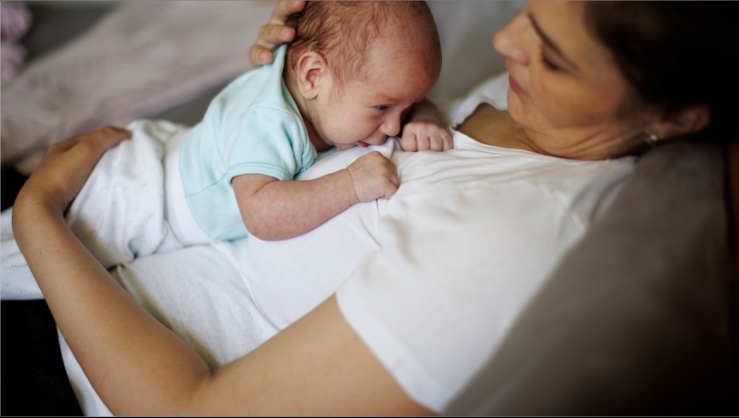
When postpartum bleeding returns – the parting bleeding
During pregnancy, we tend to prepare a lot for the birth, its process, and the baby’s first days, but how will the first postpartum days be for the mother and what about the postpartum bleeding? Today, we talk about the bleeding that we can expect in the postpartum period and how to know if it is normal for new bleeding to appear during the first six weeks after birth.
Lochia, the first vaginal bleeding after childbirth
Let’s go by step; we know that after the birth of a baby, either by vaginal birth or c-section, there will appear vaginal bleeding that can last between 3 and 5 weeks; this is what we call lochia.
The appearance of the lochia will change according to time. During the first few days, they are red, quite abundant, and small clots may also appear. Little by little, they will decrease in quantity, and their appearance gets more liquid and yellowish-whitish in color until they practically disappear.
The vaginal bleeding that appears after the lochia or parting bleeding
Once the lochia is already diminishing considerably or has even disappeared completely, it is possible that vaginal bleeding, similar to menstruation, may appear again. As we have already mentioned, although it is a physiological and common situation, not all women will experience this. So, not having it is also within normality.
If this new bleeding appears before 6 weeks after delivery, it is not a menstruation; it will be what some midwives call the parting bleeding. This is the expulsion of the last rest of birth remainings in the uterus, both the layer that covered it inside during pregnancy and the bleeding due to the scar left by the placenta after the baby’s birth. This bleeding may be reddish or it may be a little brownish. There may also be some fairly heavy clotting, and this usually does not last more than 3-4 days.
Some mothers report that they notice a feeling of pressure in the lower abdomen just before getting this bleeding, as if a menstrual period were coming. It is possible that just before the delivery, the uterus makes some contractions to expel the blood that is still in the uterus. Occasionally, this parting bleeding may occur after you have become more physically active again or, for example, have restarted sexual relations. It does not indicate any problem; it simply brings out what has accumulated in the uterus.
Recommendations for managing vaginal bleeding after childbirth
The intimate hygiene products recommended for postpartum bleeding are obstetric maternity pads, which are made of cotton and quite thick, and they should be changed frequently. Although the wounds and tears of the vulva, if you had them, are usually well healed at this point, it is still not recommended to use menstrual pads with plastics as they tend to be irritating and do not transpire, nor is it recommended to use internal tampons or menstrual cups, as the pelvic floor muscles, which surrounds the vagina, is still recovering from childbirth or c-section and pregnancy. Once you no longer have heavy bleeding but continue to have light bleeding and no longer want to use maternity pads, you can try cotton or cellulose pads.
When do I have to see the midwife or obstetrician?
Postpartum bleeding is a normal physiological process that allows the contents of the uterus to come out of the uterus. Even so, it is important to know the warning signs that may indicate that something is not going well, and it is advisable to see your midwife or obstetrician of reference. Once the parting bleeding has begun, if you experience any of the following or have questions about the process, make sure you see your midwife so that she can guide you:
- The bleeding smells bad, is getting heavier, or does not stop within 4 days.
- You have a fever.
- You have pain in your lower abdomen.
- You find it difficult to pass urine.
In these circumstances, the possibility of infection or retention of more content of the uterus must be ruled out.
Does the parting bleeding influence the return of the period after giving birth?
No, the parting bleeding is unrelated to the time it will take for your period to return.
Usually, in mothers who breastfeed their babies, menstruation returns more than three months after giving birth, and the vast majority will be without a period for as long as the baby breastfeeds very often. Others, even if they exclusively breastfeed, will have their periods sooner, which is not a problem for lactation. If you are not breastfeeding, periods usually reappear between the 6th and 8th week after the birth, but this can still vary from person to person.